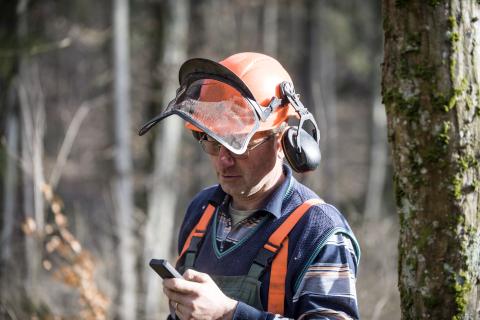
Subscribe to the FSC Sustainable Intensification newsletter for further updates <here>
Contact us on engagement@fsc.org
FAQs on Genetic Engineering
-
What is genetic engineering?
Genetic engineering is a process that alters the genetic structure of an organism by either removing or introducing DNA. Unlike traditional plant breeding, which involves doing multiple crosses and then selecting for the organism with the desired characteristic, genetic engineering takes the gene directly from one organism and delivers it to the other. The result of genetic engineering is called a genetically modified organism. Gene editing is a different process in which genetic material is removed or altered at locations within the genome of a plant.
-
What is FSC’s policy and rules on genetic engineering?
GE material is not allowed in certified forest operations or in FSC certified products under the FSC Principles and Criteria, further explained in FSC policy FSC-POL-30-602 Interpretation on Genetically Modified Organisms, 2000. The current FSC Policy for Association only allows GMO research and planting outside of FSC Certified area by FSC Certified companies under specific conditions and prohibits the material used in this research in certified products and from being sold commercially.
-
Why is genetic engineering a topic for FSC?
1. There is a trend of growing global demand for wood and forest products while at the same time there is an urgent need to protect forests and biodiversity. There is also a drive in the market to apply genetic engineering techniques in forestry for several reasons, including:
-To develop resistance to pests and diseases and accelerate adaptability to climate induced change
-To improve growth and yield of planted trees, whilst easing pressure on land (land sparing)
-To adapt the wood-fibre to new and more efficient industrial uses (e.g. by reduction of lignin content)
2. FSC is aware of several FSC certified companies advancing their genetic engineering research, and FSC’s policies in this area do not reflect current status in research or technologies.
To be prepared for this development, FSC needs to review its policies and influence on genetic engineering. There has been significant technological development in forestry related to GE since the FSC-POL-30-602 Interpretation on Genetically Modified Organisms, 2000 and the FSC Policy for Association (2009) were determined. These developments call for an update of FSC definitions as included in FSC-POL-30-602, and to do this well, we need to understand the field better.
-
Is FSC changing its rules on genetic engineering?
There is no intention to change the rules that have been set for genetic engineering in FSC. FSC policy remains that GE material is not allowed in certified forest operations and are not allowed in FSC certified materials.
FSC will update the policy FSC-POL-30-602 Interpretation on Genetically Modified Organisms, 2000 on the interpretation of GMOs to reflect the current status of research as the policy (developed in 2000) is outdated.
-
How can I ask questions on this topic?
Please reach out to us on engagement@fsc.org






